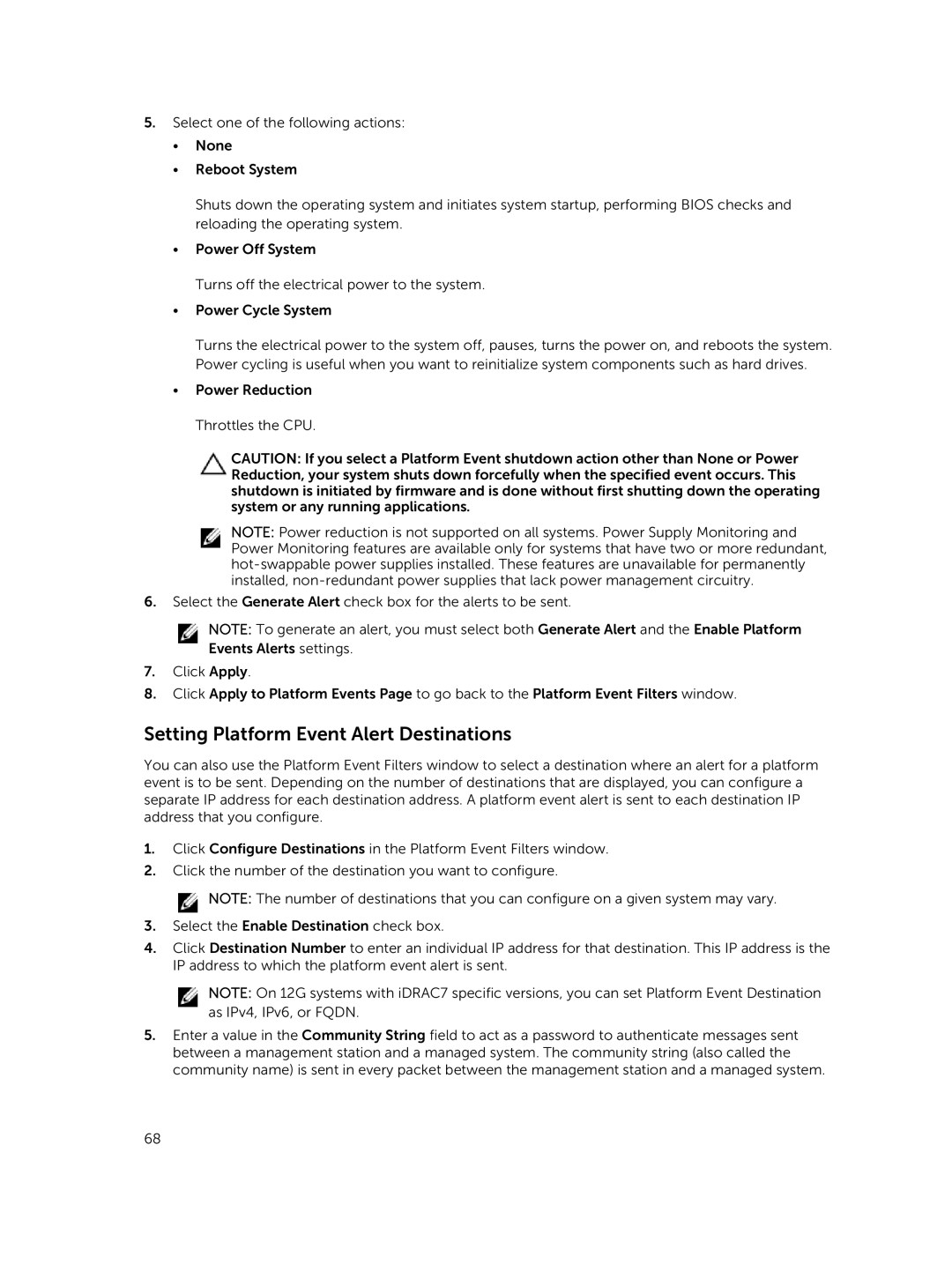5.Select one of the following actions:
•None
•Reboot System
Shuts down the operating system and initiates system startup, performing BIOS checks and reloading the operating system.
•Power Off System
Turns off the electrical power to the system.
•Power Cycle System
Turns the electrical power to the system off, pauses, turns the power on, and reboots the system. Power cycling is useful when you want to reinitialize system components such as hard drives.
•Power Reduction
Throttles the CPU.
CAUTION: If you select a Platform Event shutdown action other than None or Power Reduction, your system shuts down forcefully when the specified event occurs. This shutdown is initiated by firmware and is done without first shutting down the operating system or any running applications.
NOTE: Power reduction is not supported on all systems. Power Supply Monitoring and Power Monitoring features are available only for systems that have two or more redundant,
6.Select the Generate Alert check box for the alerts to be sent.
NOTE: To generate an alert, you must select both Generate Alert and the Enable Platform
Events Alerts settings.
7.Click Apply.
8.Click Apply to Platform Events Page to go back to the Platform Event Filters window.
Setting Platform Event Alert Destinations
You can also use the Platform Event Filters window to select a destination where an alert for a platform event is to be sent. Depending on the number of destinations that are displayed, you can configure a separate IP address for each destination address. A platform event alert is sent to each destination IP address that you configure.
1.Click Configure Destinations in the Platform Event Filters window.
2.Click the number of the destination you want to configure.
![]() NOTE: The number of destinations that you can configure on a given system may vary.
NOTE: The number of destinations that you can configure on a given system may vary.
3.Select the Enable Destination check box.
4.Click Destination Number to enter an individual IP address for that destination. This IP address is the IP address to which the platform event alert is sent.
NOTE: On 12G systems with iDRAC7 specific versions, you can set Platform Event Destination as IPv4, IPv6, or FQDN.
5.Enter a value in the Community String field to act as a password to authenticate messages sent between a management station and a managed system. The community string (also called the community name) is sent in every packet between the management station and a managed system.
68
